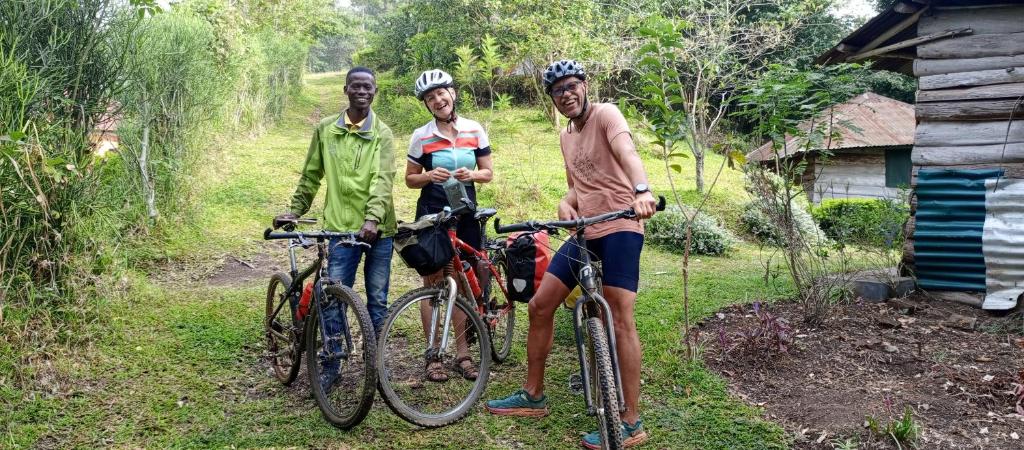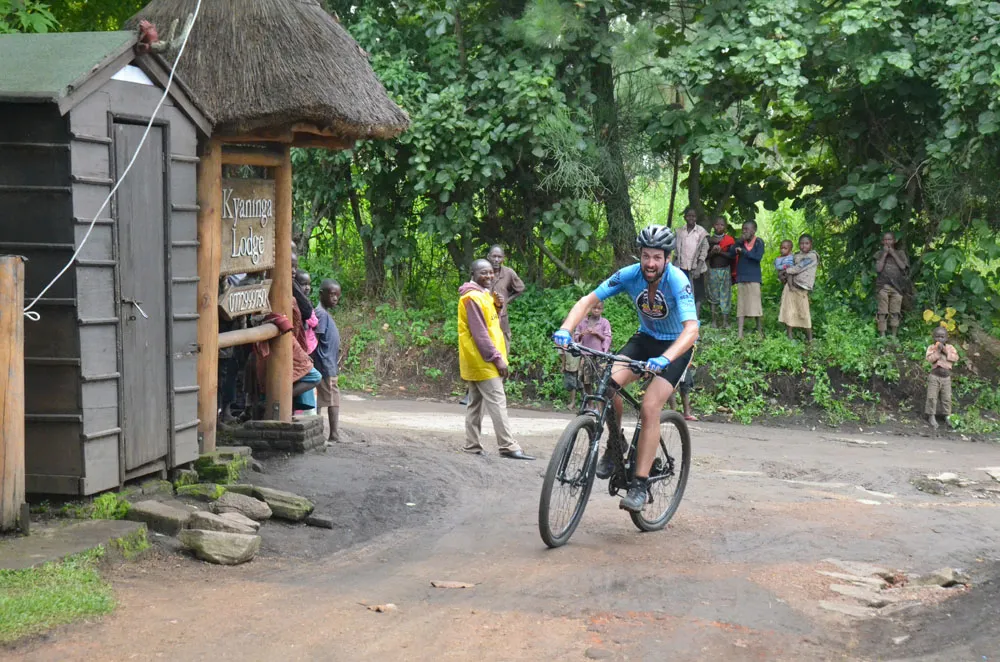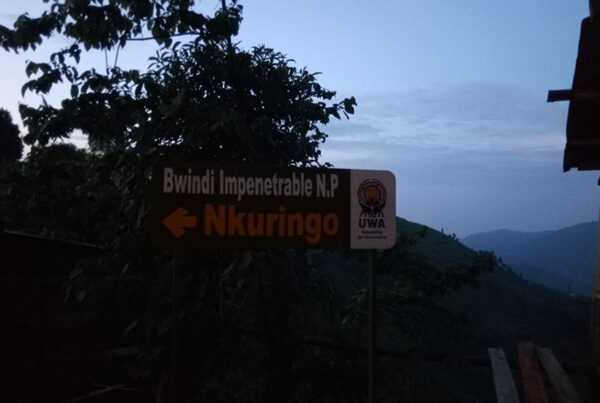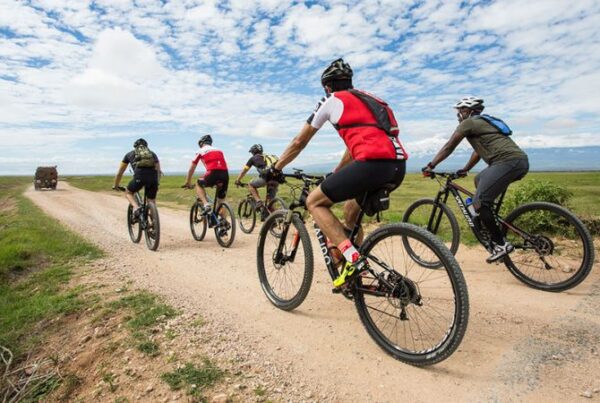Local’s Guide: Fort Portal Mountain Biking for Photographers
Where Adventure Meets Lens
In the heart of western Uganda, a city cloaked in mist and surrounded by rolling hills holds a secret for those who crave both adventure and artistry. Fort Portal, often referred to as the “City of Seven Hills,” has quietly emerged as a destination where mountain biking meets photography, offering travelers the chance to capture stunning landscapes while embracing the thrill of rugged trails.
For photographers, whether professional or passionate hobbyists, Fort Portal provides more than scenic beauty. Every hill, waterfall, and forested path presents an opportunity to frame light, shadow, and life in ways that cannot be replicated elsewhere. Yet what makes this experience extraordinary is that it is not confined to still imagery. Mountain biking allows photographers to navigate perspectives that remain inaccessible by vehicle or foot alone, creating a dynamic interplay between motion and composition. For those seeking a deeper engagement with the natural world and the art of photography, this dual adventure is nothing short of transformative.
Why Fort Portal is Ideal for Mountain Biking Photographers
Fort Portal’s topography is uniquely suited for mountain biking, especially for those with cameras in hand. The hills rise and fall in gentle yet challenging sequences, offering both endurance tests and moments of visual reward. The trails, many of which weave through tea plantations, crater lakes, and indigenous forests, allow photographers to stop, frame, and shoot without being limited by accessibility.
Beyond the terrain, the climate contributes to the visual drama. Mist often cloaks the hills in early morning, creating ethereal landscapes where light filters through dense foliage. Afternoon skies, with their dramatic shifts and interplay of cloud and sun, provide contrasts that enhance photographs. The combination of accessible yet varied trails, unique lighting conditions, and proximity to natural wonders makes Fort Portal a rare gem for those who seek both adventure and artistry.
For mountain bikers, these trails challenge balance, stamina, and strategy, yet they also reward every effort with expansive views and hidden photographic opportunities. The experience of navigating a winding trail while pausing to capture a waterfall, a colorful bird, or a sunlit tea plantation fosters a rhythm between activity and observation that is rarely found elsewhere.
Essential Preparations for Photographers on the Trails
Preparation for mountain biking in Fort Portal, especially for photographers, is as much about equipment as it is about physical readiness. Bikes must be carefully selected for both durability and comfort, with tires and suspension suited for uneven terrain. Helmets and protective gear are essential, ensuring safety while navigating rocky paths and steep inclines.
For photographers, additional considerations must be made. Lightweight cameras with weather-resistant features are preferred, as trails can be dusty or wet. Lens choices, from wide-angle for landscapes to zoom lenses for wildlife and distant subjects, are influenced by the trail’s expected vistas. Protective bags, harnesses, and secure straps are essential to prevent damage during active riding.
Timing is also critical. Early mornings are ideal for soft, diffused light, misty atmospheres, and minimal human activity. Late afternoons provide golden light, enhancing textures and warmth in landscapes. Photographers are encouraged to plan their rides to coincide with these optimal lighting windows, balancing physical exertion with artistic opportunity.
Iconic Trails and Photographic Opportunities
Fort Portal is home to numerous trails that cater specifically to adventurous photographers. The paths leading to Crater Lakes National Park reveal landscapes punctuated by volcanic craters filled with vibrant water, often reflecting the sky in perfect symmetry. These lakes, surrounded by dense forest, offer opportunities to capture reflections, wildlife, and intricate compositions that blend color, texture, and form.
The trails to Rwenzori foothills are similarly mesmerizing. Mountain bikers encounter undulating terrain with sudden drops, winding paths, and open valleys, each turn presenting a unique photographic frame. Wildlife is frequently encountered, from small primates moving through the trees to colorful birds flitting across paths. Photographers riding these trails benefit from the dynamic interaction between motion and observation, as every bend can reveal a new visual story.
Tea plantations, ubiquitous in Fort Portal, add yet another layer of opportunity. Trails often cut through perfectly manicured rows of tea bushes, their lush green leaves contrasting sharply with red soil paths. Sunrise and sunset illuminate these landscapes, creating a palette of colors ideal for wide-angle shots or abstract compositions. Families of workers moving through the plantations introduce subtle narratives, providing depth to the imagery captured along the ride.
The Art of Capturing Motion
Mountain biking inherently involves motion, yet this can be transformed into photographic opportunity. Techniques such as panning, where the camera follows a moving subject, can convey speed and energy. Photographers on trails may choose to capture fellow riders, wildlife, or moving streams to convey the sensation of movement, transforming static landscapes into dynamic experiences.
Strategic pauses along trails allow for composition without sacrificing continuity. Moments at trail summits, hilltops, or near waterfalls enable photographers to frame expansive vistas while maintaining the rhythm of the ride. Careful attention to light, shadow, and natural framing enhances the depth of each image. The dual discipline of riding and shooting fosters mindfulness, teaching photographers to observe and anticipate before capturing.
Hidden Gems Beyond the Beaten Path
Fort Portal’s trails are rich with hidden gems that often elude casual tourists. Small waterfalls tucked behind tea estates, naturally carved rock formations, and isolated ponds within forest reserves offer unexpected compositions. Local guides familiar with the terrain provide insight into these secluded spots, ensuring that photographers can discover unique frames that are otherwise invisible.
Cultural encounters also emerge as hidden treasures. Trails frequently intersect with small villages, markets, and craft areas. Photographers have the chance to capture daily life in Fort Portal, from children playing along dusty paths to artisans at work in open-air workshops. These moments introduce authenticity into travel photography, providing narrative layers beyond landscapes and wildlife.
Photography Ethics and Respect for the Environment
While the thrill of mountain biking and the allure of compelling imagery are enticing, ethical considerations must be maintained. Photographers are encouraged to respect wildlife, maintaining distance and avoiding disruption to natural behaviors. Trail etiquette is equally important, ensuring that erosion is minimized, plants remain unharmed, and local communities feel respected.
Cultural sensitivity is paramount. When photographing local people, consent is essential. Engaging with subjects and understanding their comfort ensures that photography captures humanity authentically and respectfully. By approaching both the environment and its inhabitants with care, photographers ensure that their work is ethically responsible while retaining aesthetic and narrative value.
Combining Adventure with Local Experiences
Mountain biking in Fort Portal is not confined to the trails alone. The city and its surroundings offer complementary experiences that enhance both the adventure and photographic potential. Local hot springs, for instance, provide thermal landscapes with steam rising against green hills—a perfect subject for atmospheric photography. Markets filled with colors, textures, and movement introduce dynamic urban compositions that contrast with natural scenery.
Visits to the Amabere Caves, a legendary site linked to Buganda mythology, provide an opportunity to capture geological formations and cultural narratives. Trails leading to these caves combine moderate biking with walking, offering a blend of physical challenge and discovery. Photographers gain access to spaces that convey both natural grandeur and cultural significance, enriching their portfolio beyond the expected landscapes.
Timing and Seasonal Considerations
Fort Portal’s climate is moderated by its elevation, yet rainfall and light conditions vary across the year. Dry seasons, typically from December to February and June to September, provide trails that are firm, accessible, and less slippery, making them safer for both biking and photography. These periods also enhance visibility, allowing photographers to capture crisp, vibrant landscapes.
Rainy months, while presenting challenges, offer unique opportunities. Trails glisten with moisture, streams swell dramatically, and mist often lingers across valleys, creating ethereal effects. Photographers who embrace these conditions find their images infused with mood and atmosphere that cannot be reproduced during dry seasons. Strategic planning, waterproof gear, and adaptive techniques ensure that photography remains productive even in wet conditions.
Building a Photographer’s Itinerary
For those seeking to maximize both biking and photography, a structured approach is recommended. Morning rides can focus on light-sensitive locations such as crater lakes or tea plantations, while mid-day can be reserved for village encounters, market photography, or guided cultural tours. Late afternoon sessions near waterfalls, ridgelines, or panoramic viewpoints capitalize on golden hour light, enhancing textures and color saturation.
Accommodations can further support this approach. Many lodges in Fort Portal offer elevated viewpoints, private decks, and strategic locations that allow for spontaneous photography without additional travel. By integrating logistics, light, and subject matter, photographers can ensure that every ride is optimized for both adventure and creative output.
Why Fort Portal Should Be on Every Adventure Photographer’s Map
Fort Portal represents a unique convergence of opportunities rarely found elsewhere. Trails are manageable yet challenging, landscapes are dramatic yet accessible, and culture is rich yet welcoming. For photographers seeking to capture the essence of Uganda beyond the conventional safari, mountain biking here provides perspectives that are both novel and memorable.
The ability to combine physical activity, natural beauty, cultural immersion, and ethical photography makes Fort Portal a destination that rewards preparation, patience, and curiosity. Every trail conquered, every frame captured, and every interaction along the way contributes to an experience that is holistic, meaningful, and visually stunning.
Transforming Adventure into Art
Mountain biking in Fort Portal is more than an adventure sport; it is a medium through which artistry, observation, and exploration converge. Photographers are not merely documenting a landscape—they are participating in it, navigating its contours, feeling its climate, and engaging with its people. The experience fosters creativity, endurance, and mindfulness, making each ride a journey in both motion and vision.
For travelers who wish to experience Uganda through the lens of both action and artistry, Fort Portal is indispensable. Trails, vistas, and cultural encounters combine to create images and memories that endure long after the journey concludes.
To ensure that every aspect of this adventure is seamless, memorable, and deeply authentic, it is highly recommended to book Africa tours and safaris through WildHorn Africa. With expertise in crafting experiences for photographers and adventurers alike, WildHorn Africa guarantees that every moment in Fort Portal becomes a story worth capturing and sharing.





 WildHorn Africa – Authentic and unforgettable tours across Africa, guided by local experts who know the land, wildlife, and culture best.
WildHorn Africa – Authentic and unforgettable tours across Africa, guided by local experts who know the land, wildlife, and culture best.


